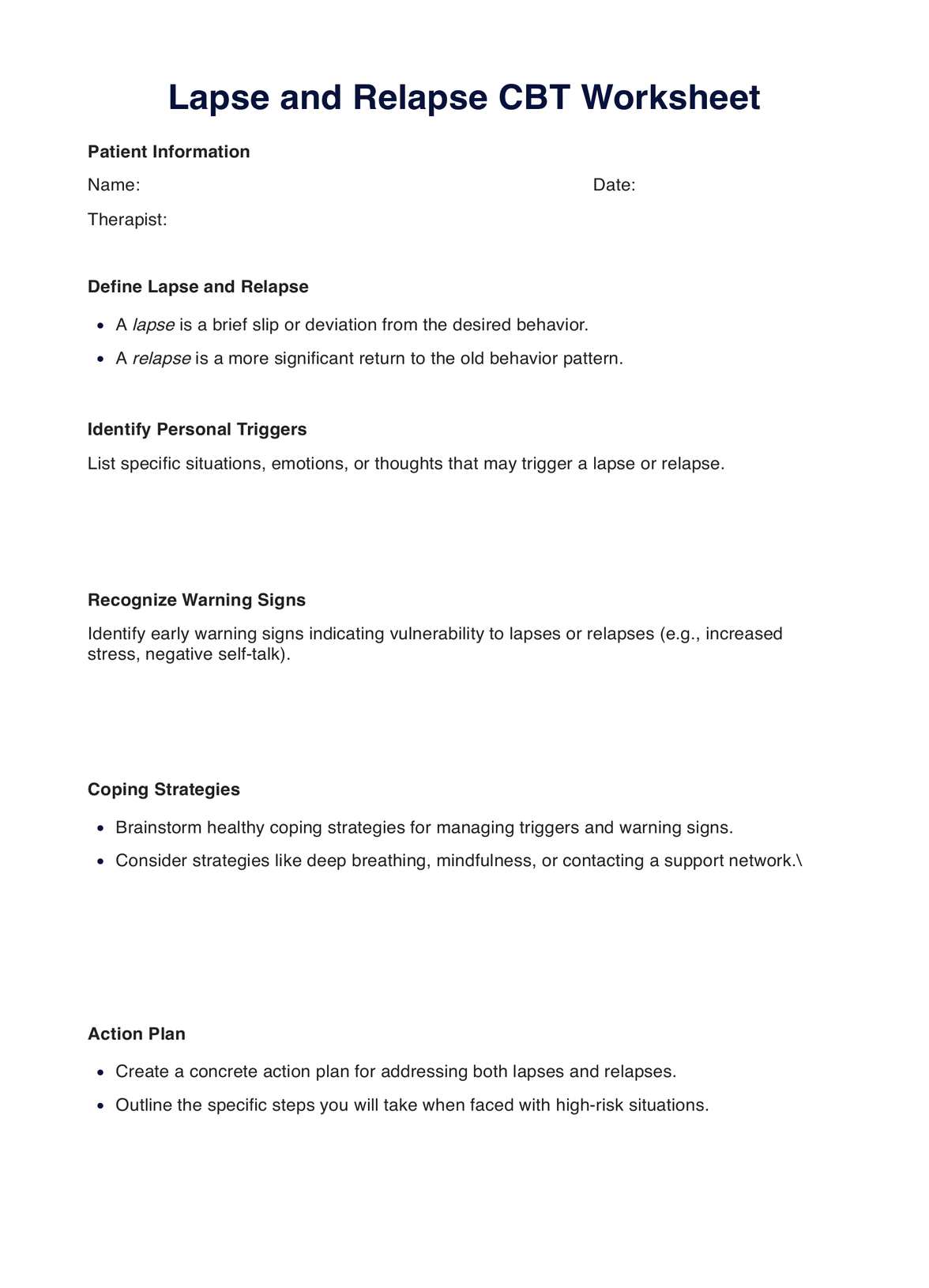The time required to complete the worksheet varies depending on individual needs and the complexity of one's behavior change goals. Generally, it can take 30 minutes to an hour to thoroughly review the worksheet.

Lapse and Relapse CBT Worksheet
Prevent setbacks with the Lapse and Relapse CBT Worksheet. Identify triggers, warning signs, and coping strategies in your behavior change journey.
Lapse and Relapse CBT Worksheet Template
Commonly asked questions
The Lapse and Relapse CBT Worksheet is often available as a downloadable PDF from various sources, including healthcare providers, therapy websites, or support groups. It can be printed out for use or filled out electronically.
This worksheet is most beneficial when used proactively, as a preventive tool, or when individuals face challenges in maintaining behavior change. It can be employed in various contexts, such as substance abuse treatment, weight management, or mental health therapy.
EHR and practice management software
Get started for free
*No credit card required
Free
$0/usd
Unlimited clients
Telehealth
1GB of storage
Client portal text
Automated billing and online payments











